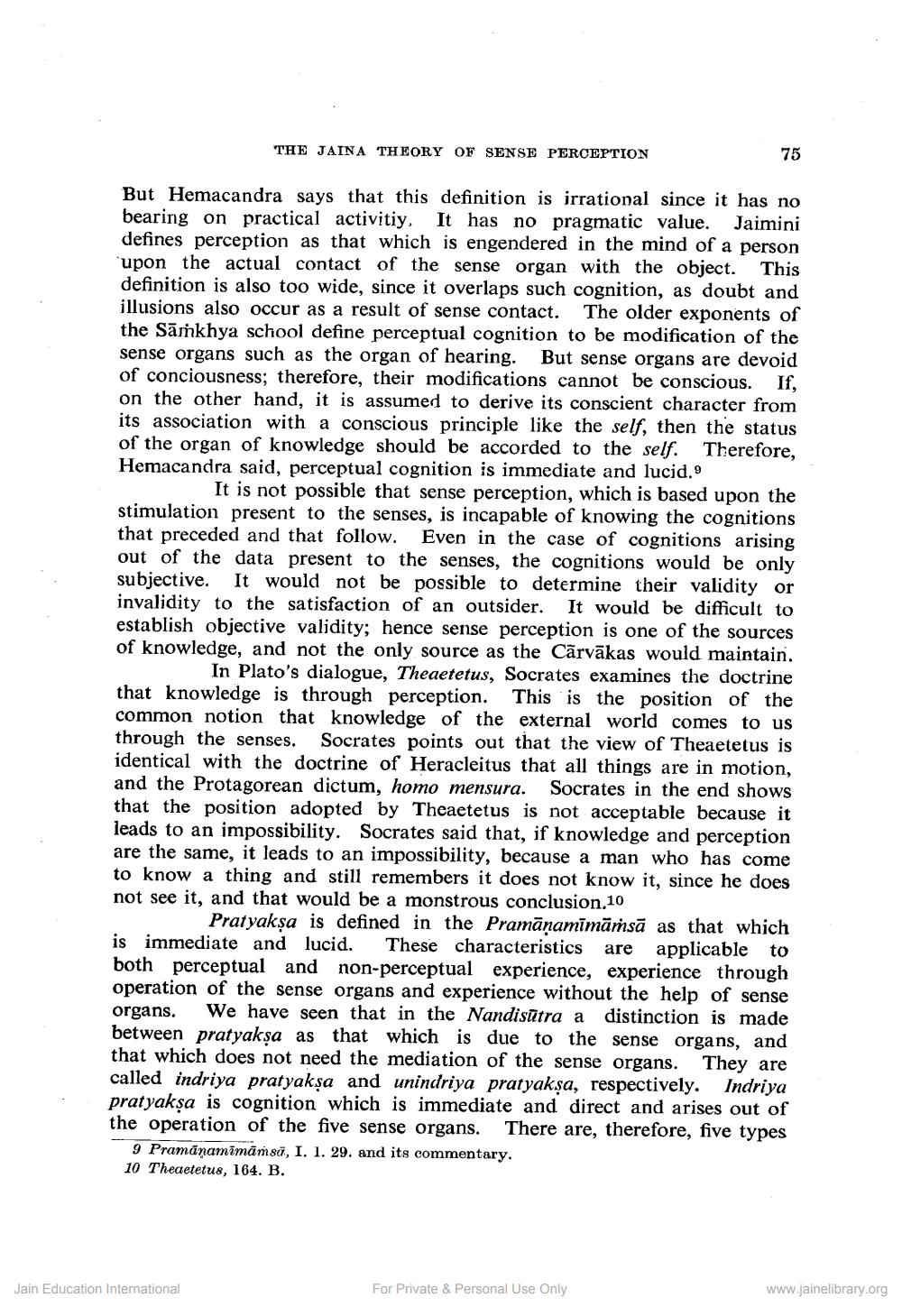________________
THE JAINA THEORY OF SENSE PERCEPTION
75
But Hemacandra says that this definition is irrational since it has no bearing on practical activitiy. It has no pragmatic value. Jaimini defines perception as that which is engendered in the mind of a person upon the actual contact of the sense organ with the object. This definition is also too wide, since it overlaps such cognition, as doubt and illusions also occur as a result of sense contact. The older exponents of the Sārkhya school define perceptual cognition to be modification of the sense organs such as the organ of hearing. But sense organs are devoid of conciousness; therefore, their modifications cannot be conscious. If, on the other hand, it is assumed to derive its conscient character from its association with a conscious principle like the self, then the status of the organ of knowledge should be accorded to the self. Therefore, Hemacandra said, perceptual cognition is immediate and lucid. 9
It is not possible that sense perception, which is based upon the stimulation present to the senses, is incapable of knowing the cognitions that preceded and that follow. Even in the case of cognitions arising out of the data present to the senses, the cognitions would be only subjective. It would not be possible to determine their validity or invalidity to the satisfaction of an outsider. It would be difficult to establish objective validity; hence sense perception is one of the sources of knowledge, and not the only source as the Cārvākas would maintain.
In Plato's dialogue, Theaetetus, Socrates examines the doctrine that knowledge is through perception. This is the position of the common notion that knowledge of the external world comes to us through the senses. Socrates points out that the view of Theaetetus is identical with the doctrine of Heracleitus that all things are in motion, and the Protagorean dictum, homo mensura. Socrates in the end shows that the position adopted by Theaetetus is not acceptable because it leads to an impossibility. Socrates said that, if knowledge and perception are the same, it leads to an impossibility, because a man who has come to know a thing and still remembers it does not know it, since he does not see it, and that would be a monstrous conclusion, 10
Pratyaksa is defined in the Pramānamīmārsā as that which is immediate and lucid. These characteristics are applicable to both perceptual and non-perceptual experience, experience through operation of the sense organs and experience without the help of sense organs. We have seen that in the Nandisūtra a distinction is made between pratyakşa as that which is due to the sense organs, and that which does not need the mediation of the sense organs. They are called indriya pratyaksa and unindriya pratyakşa, respectively. Indriya pratyakșa is cognition which is immediate and direct and arises out of the operation of the five sense organs. There are, therefore, five types
9 Pramānamimärsū, I. 1. 29. and its commentary, 10 Theaetetus, 164. B.
Jain Education International
For Private & Personal Use Only
www.jainelibrary.org




